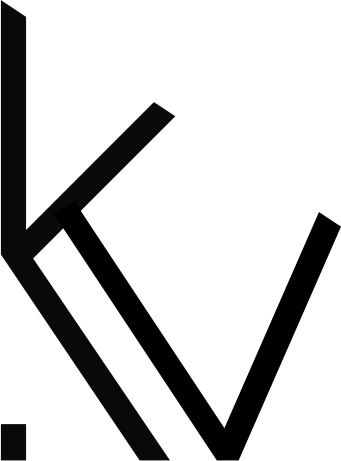NLP Chatbot A Complete Guide with Examples
If you already have a labelled dataset with all the intents you want to classify, we don’t need this step. That’s why we need to do some extra work to add intent labels to our dataset. As NLP continues to advance, chatbots will become even more sophisticated, enhancing user experiences, and automating tasks with greater efficiency.
Today, the need of the hour is interactive and intelligent machines that can be used by all human beings alike. For this, computers need to be able to understand human speech and its differences. Setting a low minimum value (for example, 0.1) will cause the chatbot to misinterpret the user by taking statements (like statement 3) as similar to statement 1, which is incorrect. Setting a minimum value that’s too high (like 0.9) will exclude some statements that are actually similar to statement 1, such as statement 2. In this section, you will create a script that accepts a city name from the user, queries the OpenWeather API for the current weather in that city, and displays the response. If you don’t want to write appropriate responses on your own, you can pick one of the available chatbot templates.
Step 5: Design the Web Interface
And there are many guides out there to knock out your design UX design for these conversational interfaces. When we compare the top two similar meaning Tweets in this toy example (both are asking to talk to a representative), we get a dummy cosine similarity of 0.8. When we compare the bottom two different meaning Tweets (one is a greeting, one is an exit), we get -0.3. Entities are predefined categories of names, organizations, chatbot using nlp time expressions, quantities, and other general groups of objects that make sense. Not only that, but they’re able to seamlessly integrate with your existing tech stack — including ecommerce platforms like Shopify or Magento — to unleash the full potential of their AI in no time. Chatbot technology like ChatGPT has grabbed the world’s attention, with everyone wanting a piece of the generative AI pie.
- In this blog, we will explore the NLP chatbot, discuss its use cases, and benefits; understand how this chatbot is different from traditional ones, and also learn the steps to build one for your business.
- There are two NLP model architectures available for you to choose from – BERT and GPT.
- NLP chatbots are advanced with the capability to mimic person-to-person conversations.
- Plus, you don’t have to train it since the tool does so itself based on the information available on your website and FAQ pages.
I mention the first step as data preprocessing, but really these 5 steps are not done linearly, because you will be preprocessing your data throughout the entire chatbot creation. Every chatbot would have different sets of entities that should be captured. For a pizza delivery chatbot, you might want to capture the different types of pizza as an entity and delivery location. For this case, cheese or pepperoni might be the pizza entity and Cook Street might be the delivery location entity.
What is OpenAI’s API? [+ How to Start Using It]
Building your own chatbot using NLP from scratch is the most complex and time-consuming method. So, unless you are a software developer specializing in chatbots and AI, you should consider one of the other methods listed below. In fact, this chatbot technology can solve two of the most frustrating aspects of customer service, namely, having to repeat yourself and being put on hold. The chatbot market is projected to reach nearly $17 billion by 2028.
With the rise of generative AI chatbots, we’ve now entered a new era of natural language processing. But unlike intent-based AI models, instead of sending a pre-defined answer based on the intent that was triggered, generative models can create original output. After all of the functions that we have added to our chatbot, it can now use speech recognition techniques to respond to speech cues and reply with predetermined responses. However, our chatbot is still not very intelligent in terms of responding to anything that is not predetermined or preset. NLP, or Natural Language Processing, stands for teaching machines to understand human speech and spoken words. NLP combines computational linguistics, which involves rule-based modeling of human language, with intelligent algorithms like statistical, machine, and deep learning algorithms.
Some Other Methods I Tried to Add Intent Labels
NLP technology, including AI chatbots, empowers machines to rapidly understand, process, and respond to large volumes of text in real-time. You’ve likely encountered NLP in voice-guided GPS apps, virtual assistants, speech-to-text note creation apps, and other chatbots that offer app support in your everyday life. In the business world, NLP, particularly in the context of AI chatbots, is instrumental in streamlining processes, monitoring employee productivity, and enhancing sales and after-sales efficiency. To show you how easy it is to create an NLP conversational chatbot, we’ll use Tidio.
Natural language processing chatbots are used in customer service tools, virtual assistants, etc. Some real-world use cases include customer service, marketing, and sales, as well as chatting, medical checks, and banking purposes. An NLP chatbot is a virtual agent that understands and responds to human language messages. Natural language processing can be a powerful tool for chatbots, helping them understand customer queries and respond accordingly.
In my case, I created an Apple Support bot, so I wanted to capture the hardware and application a user was using. Now that we understand the core components of an intelligent chatbot, let’s build one using Python and some popular NLP libraries. Missouri Star added an NLP chatbot to simultaneously meet their needs while charming shoppers by preserving their brand voice. Agents saw a lighter workload, and the chatbot was able to generate organic responses that mimicked the company’s distinct tone. Listening to your customers is another valuable way to boost NLP chatbot performance.
Millennials today expect instant responses and solutions to their questions. NLP enables chatbots to understand, analyze, and prioritize questions based on their complexity, allowing bots to respond to customer queries faster than a human. Faster responses aid in the development of customer trust and, as a result, more business. If you are interested in developing chatbots, you can find out that there are a lot of powerful bot development frameworks, tools, and platforms that can use to implement intelligent chatbot solutions. How about developing a simple, intelligent chatbot from scratch using deep learning rather than using any bot development framework or any other platform.

